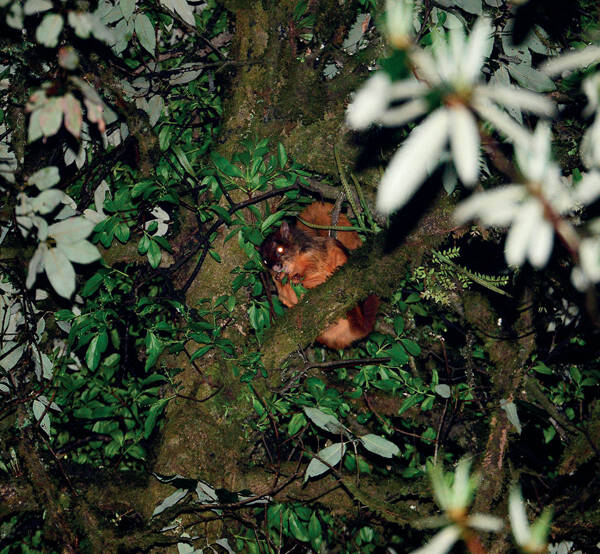Petaurista magnificus
IUCN
LCBasic Information
Scientific classification
- name:Petaurista magnificus
- Scientific Name:Petaurista magnificus,Magnificent Flying Squirrel,Beautiful flying squirrel, Beautiful flying squirrel, Hao's flying squirrel
- Outline:Rodents
- Family:Rodentia Sciuridae F.Squirrel
Vital signs
- length:
- Weight:
- lifetime:
Feature
It is large in size, with a thick and round tail that is no longer than the body.
Distribution and Habitat
Distributed in southern Tibet in China. Distributed abroad in Nepal, India and Bhutan.
It mainly lives in evergreen broad-leaved forests and deciduous forests, and its habitat can reach an altitude of about 3000m.
Appearance
Large flying squirrel. The back is yellow-brown or dark brown. There are dark brown to light black longitudinal stripes from the head to the base of the tail. The yellow spot on the shoulder is obvious. The sides of the body and the wing membrane are dark yellow-brown. The abdomen is yellow-brown. The base of the tail is brown, and the tail hair is mainly yellow-brown with black hair tips. The feet are black.
Details
The chestnut brown flying squirrel mainly lives in the mountain evergreen broad-leaved forest belt below 2500m above sea level, where the vegetation consists of Castanopsis, Carle, Oak and other tree species; the climate of its habitat is warm, and the frost-free period is generally more than 200 days; the rainfall is abundant, with an annual rainfall of about 2000mm, so it has the characteristics of a subtropical marine climate. It builds its nest in the tree hole of a big tree. It feeds on the tender leaves of broad-leaved trees and various wild fruits.

The nest is built in a dead tree hole or a rock cave, and often in an oak tree. In Deqin, northwest Yunnan, the nest is built on a 20-meter-high yellow-backed oak tree. The nest is made of oak and pine branches, and is covered with moss, lichens, feathers and hay. The nest is spherical, about 15 meters above the ground, with the nest mouth facing upward. The outer diameter of the nest is 300 mm, the wall thickness is 130 mm, and the inner diameter is 170 mm. The nesting materials are lichens, mosses and a small fibrous bark. The bottom of the nest is supported by branches of yellow-backed oak and Chinese pine. It eats young buds of yellow-backed oak, young buds of fir and small beetles. The feces are black, oval and 3×2 (mm).
According to surveys in the 1960s and 1970s, the skins of this animal were rarely seen in the local livestock product purchasing departments of various counties in southern Tibet. Before the 1980s, there were logging sites in the forest areas below 2,500m in Zhangmu Port and Jilong in its distribution area, and the reduction in forest area would undoubtedly threaten the survival conditions of this species to a certain extent. But the extent of the threat is still unclear. According to the survey. Because the fur and economic value of the beautiful flying squirrel are not great, hunters rarely hunted it specifically in the past.
Since 1985, the Zhangmu Port Nature Reserve, Jilongjiang Village Nature Reserve and Mount Everest Nature Reserve, which were established to protect natural ecosystems, have included the distribution area of this species. Therefore, the beautiful flying squirrel and its habitat should be protected accordingly.









